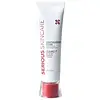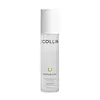What's inside
What's inside
 Key Ingredients
Key Ingredients

No key ingredients
 Benefits
Benefits

 Concerns
Concerns

 Ingredients Side-by-side
Ingredients Side-by-side

Benzoyl Peroxide 5%
Water
Skin ConditioningGlycerin
HumectantMelaleuca Alternifolia Leaf Oil
AntioxidantCamellia Sinensis Leaf Extract
AntimicrobialButylene Glycol
HumectantSodium PCA
HumectantBetaine
HumectantSorbitol
HumectantGlycine
BufferingAlanine
MaskingProline
Skin ConditioningSerine
MaskingThreonine
Arginine
MaskingLysine
Skin ConditioningGlutamic Acid
HumectantAllantoin
Skin ConditioningDisodium EDTA
Carbomer
Emulsion StabilisingAcrylates/C10-30 Alkyl Acrylate Crosspolymer
Emulsion StabilisingAminomethyl Propanol
BufferingPhenoxyethanol
PreservativeMethylparaben
PreservativeButylparaben
MaskingEthylparaben
PreservativePropylparaben
PreservativeIsobutylparaben
AntimicrobialBenzoyl Peroxide 5%, Water, Glycerin, Melaleuca Alternifolia Leaf Oil, Camellia Sinensis Leaf Extract, Butylene Glycol, Sodium PCA, Betaine, Sorbitol, Glycine, Alanine, Proline, Serine, Threonine, Arginine, Lysine, Glutamic Acid, Allantoin, Disodium EDTA, Carbomer, Acrylates/C10-30 Alkyl Acrylate Crosspolymer, Aminomethyl Propanol, Phenoxyethanol, Methylparaben, Butylparaben, Ethylparaben, Propylparaben, Isobutylparaben
Water
Skin ConditioningHamamelis Virginiana Flower Water
AstringentTilia Cordata Flower Water
MaskingRubus Fruticosus Fruit Water
MaskingAloe Barbadensis Leaf Extract
EmollientPropylene Glycol
HumectantSodium Lactate
BufferingSodium PCA
HumectantSorbitol
HumectantProline
Skin ConditioningRosa Centifolia Flower Water
Skin ConditioningPolysorbate 20
EmulsifyingGlycerin
HumectantGlycosaminoglycans
EmollientGlycogen
HumectantButylene Glycol
HumectantPhenoxyethanol
PreservativeMethylparaben
PreservativeEthylparaben
PreservativePropylparaben
PreservativeButylparaben
MaskingAllantoin
Skin ConditioningDiazolidinyl Urea
PreservativeLavandula Spica Flower Oil
MaskingCitrus Limon Peel Oil
MaskingEucalyptus Dives Leaf Oil
PerfumingJuniperus Virginiana Wood Oil
PerfumingLavandula Angustifolia Oil
MaskingCitrus Grandis Peel Oil
MaskingWater, Hamamelis Virginiana Flower Water, Tilia Cordata Flower Water, Rubus Fruticosus Fruit Water, Aloe Barbadensis Leaf Extract, Propylene Glycol, Sodium Lactate, Sodium PCA, Sorbitol, Proline, Rosa Centifolia Flower Water, Polysorbate 20, Glycerin, Glycosaminoglycans, Glycogen, Butylene Glycol, Phenoxyethanol, Methylparaben, Ethylparaben, Propylparaben, Butylparaben, Allantoin, Diazolidinyl Urea, Lavandula Spica Flower Oil, Citrus Limon Peel Oil, Eucalyptus Dives Leaf Oil, Juniperus Virginiana Wood Oil, Lavandula Angustifolia Oil, Citrus Grandis Peel Oil
Ingredients Explained
These ingredients are found in both products.
Ingredients higher up in an ingredient list are typically present in a larger amount.
Allantoin is a soothing ingredient known for its protective and moisturizingg properties. Because of this, it is often added to products with strong active ingredients.
Studies show higher concentrations of this ingredient can promote wound healing.
Though it can be derived from the comfrey plant, allantoin is produced synthetically for cosmetic products to ensure purity.
Learn more about AllantoinButylene Glycol (or BG) is used within cosmetic products for a few different reasons:
Overall, Butylene Glycol is a safe and well-rounded ingredient that works well with other ingredients.
Though this ingredient works well with most skin types, some people with sensitive skin may experience a reaction such as allergic rashes, closed comedones, or itchiness.
Learn more about Butylene GlycolButylparaben is a preservative, is a paraben, and is not reef safe. It can be bad for dry skin and worsen eczema.
Ethylparaben is a preservative, is a paraben, and is not reef safe.
Glycerin is already naturally found in your skin. It helps moisturize and protect your skin.
A study from 2016 found glycerin to be more effective as a humectant than AHAs and hyaluronic acid.
As a humectant, it helps the skin stay hydrated by pulling moisture to your skin. The low molecular weight of glycerin allows it to pull moisture into the deeper layers of your skin.
Hydrated skin improves your skin barrier; Your skin barrier helps protect against irritants and bacteria.
Glycerin has also been found to have antimicrobial and antiviral properties. Due to these properties, glycerin is often used in wound and burn treatments.
In cosmetics, glycerin is usually derived from plants such as soybean or palm. However, it can also be sourced from animals, such as tallow or animal fat.
This ingredient is organic, colorless, odorless, and non-toxic.
Glycerin is the name for this ingredient in American English. British English uses Glycerol/Glycerine.
Learn more about GlycerinMethylparaben is a preservative and is a paraben. It is used to prevent the growth of fungus, mold, and other harmful bacteria. Parabens are chemicals used as preservatives in both cosmetics and food.
Methylparaben can be synthetically created. It can also be found naturally in some fruits, such as blueberries.
Oftentimes, Methylparaben is combined with other parabens to help increase the shelf life.
The safety of Methylparaben is currently being studied. While ongoing studies are looking into the safety of parabens, the results have been very mixed. Some studies have not found Methylparaben to be harmful.
Learn more about MethylparabenPhenoxyethanol is a preservative that has germicide, antimicrobial, and aromatic properties. Studies show that phenoxyethanol can prevent microbial growth. By itself, it has a scent that is similar to that of a rose.
It's often used in formulations along with Caprylyl Glycol to preserve the shelf life of products.
Proline is an amino-acid. It helps moisturize the skin and plays an important role in creating proteins.
Our skin uses proline as one of the building blocks for producing collagen.
In medicine, proline is used as an osmoprotectant. This means it helps prevent oxidative degradation in other drugs.
Our bodies are able to produce proline naturally, but certain conditions may inhibit this production. In that case, proline can be obtained from eating egg whites, soy protein, dairy products, asparagus, mushrooms, and seaweed.
Learn more about ProlinePropylparaben is a preservative and is a paraben with antifungal and antimicrobial properties.
This ingredient can be naturally found in plants and insects, but most of it is synthetically manufactured for human use. In cosmetics, it is usually created by reacting para-aminobenzoic acid and propanol (an alcohol).
You can usually find this ingredient in water-based products.
Parabens have come under controversy due to the claim they are hormone disruptors. Studies show conflicting results. We recommend speaking with a professional if you have any concerns.
Propylparaben is commonly found in food, medicine, and cosmetics.
Learn more about PropylparabenSodium PCA is the sodium salt of pyroglutamic acid. It is naturally occurring in our skin's natural moisturizing factors where it works to maintain hydration.
The PCA stands for pyrrolidone carboxylic acid, a natural amino acid derivative.
This ingredient has skin conditioning, anti-inflammatory, and humectant properties. Humectants help hydrate your skin by drawing moisture from the air. This helps keep your skin moisturized.
Learn more about Sodium PCASorbitol is a sugar alcohol. It is a hydrating and moisturizing agent created from the reduction process of glucose.
Most sorbitol is usually made from potato starch. It is also found in fruits such as apples and pears.
As a humectant, Sorbitol helps draw water to the skin. This helps keep the skin hydrated. Sorbitol also helps create a thicker texture in products. You might find sorbitol in your toothpaste and other gels.
It is a non-irritating ingredient that is great for those with dry skin.
Sorbitol is a prebiotic. It helps promote the growth of healthy bacteria on your skin. The bacteria on your skin form a microbiome. This microbiome helps protect your skin from infection and harmful bacteria.
Learn more about SorbitolWater. It's the most common cosmetic ingredient of all. You'll usually see it at the top of ingredient lists, meaning that it makes up the largest part of the product.
So why is it so popular? Water most often acts as a solvent - this means that it helps dissolve other ingredients into the formulation.
You'll also recognize water as that liquid we all need to stay alive. If you see this, drink a glass of water. Stay hydrated!
Learn more about Water